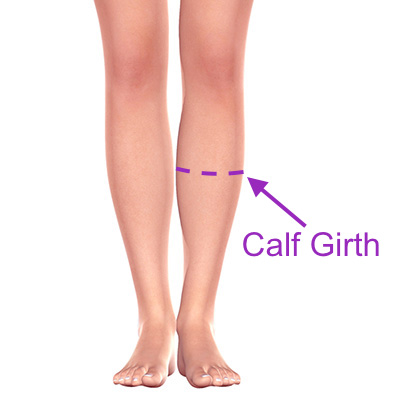Looking to Buy a Pair of properly-sized Compression Socks?
Click the button below to see the lineup of ComproGear Compression Socks.
NOTE: The page includes a sizing chart and free returns, so you’re always sure to get the perfect size!
Most women want to look cute and stylish! But, for most women, comfort and health are also equally important. Many sacrifice their health and comfort on the “altar of fashion”.
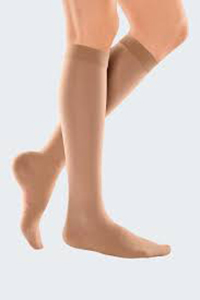
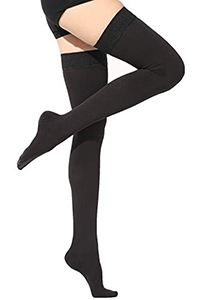
What if it was possible to not only be healthy but to also look stylish and comfortable? Well here’s some great news: it is! Let’s take a look at the way compression stockings for women can change everything about the way your legs feel.
One particularly important aspect of the health of many women is circulation, especially as this affects the legs. Your legs and feet spend all day long holding you up–particularly if you work in an industry (such as nursing) that requires you to do a great deal of standing or walking. You can do your legs and body a favor when you consider wearing compression socks for women to help give a boost to your health. Read on to see how.
Women’s Compression Socks for Circulation
Blood is one of the life-supporting elements in our bodies. It carries all of the essential components to the cells. Your cells would starve to death if blood didn’t reach them! Many medical professionals have indicated that knee-high or thigh-high graduated support pressure stockings can promote a healthier circulation system for those who spend a lot of time on their feet and are at risk for varicose veins. As well, compression socks are recommended highly for those who do a lot of sitting and need help to prevent swelling or blood clots.
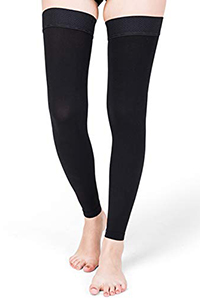
How Do They Work?
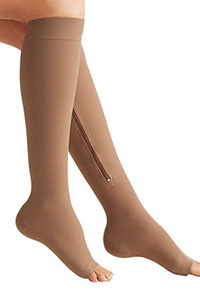

According to the US National Library of Medicine “Pressure stockings gently squeeze your legs to move blood up your legs.” Gravity can take a toll on the legs and make it hard for blood to flow back up to the heart properly. The compression in the socks or stockings helps to increase the venous volume and assists in making the blood from the legs to flow naturally back to the heart. According to research by Erasmus University Rotterdam, knee-high or thigh-high graduated women’s support hose can help in the prevention of chronic venous diseases (CVD) such as varicose veins, as well as edema.
Types and Styles
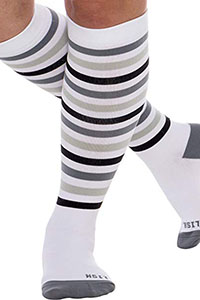
Variety is the spice of life! Knee-high or thigh-high graduated support compression socks come in many different colors, styles and sizes. It is important to know the size and the type of compression socks you need for your legs to make sure they are most effective. And you’ll need to know which pressure is recommended for your specific needs. However, as far as color and pattern go, the choice is completely up to your style and taste!
There are two classifications of pressure stockings. The first is in relation to the pressure exerted on the legs while the second one is on the general use.
Looking to Buy a Pair of properly-sized Compression Socks?
Click the button below to see the lineup of ComproGear Compression Socks.
NOTE: The page includes a sizing chart and free returns, so you’re always sure to get the perfect size!
Different Levels
Because they are used for different purposes and health results, compression stockings for women are made available in several different levels of pressure, as described below:
- Extra Mild –These compression stockings have the lowest pressure level of between 8 – 15 millimeters of mercury (mmHg). These are generally used as relief from mild symptoms such as fatigued limbs, as well as promoting healthy circulation for those sitting for long periods of time. As they are often used for travel, these are sometimes called “flight socks” and are available without a prescription at your local pharmacy or online.
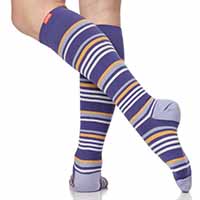
- Mild – With a pressure level of 15 – 20 millimeters of mercury (mm-Hg), these are still considered to be on the lower end of pressure and may be available without a prescription.
- Moderate (Class I) – These compression socks have a pressure level of 20 – 30 mmHg of mercury (mmHg) and are the level most commonly prescribed by doctors. They are often used for nurses and other professionals who stand on their feet for long hours at a time. These are most often the best compression socks for women.
- Firm (Class II) – The level of pressure and firmness of these compression socks for women is 30 – 40 millimeters of mercury (mm-Hg) and these are used for those with more severe health needs.
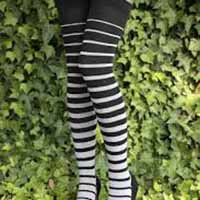
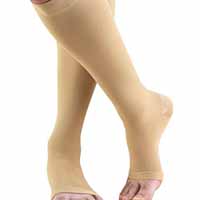
- Extra Firm (Class III) – With 40-50 mmHg, this level of pressure is very high and may only be used by those whose doctor has prescribed them for use for severe health concerns such as post-thrombotic syndrome or other problems.
In the above classifications, we have 2 general categories in relation to medical use:
- Non-Medical Grade – 8 mmHg to 15 mmHg and 15 mmHg to 20 mmHg – Mild and Medium compression stockings fall under this category
- Medical Grade – 20 mmHglevel or higher are considered to be medical grade and must be prescribed by a medical professional. If you have questions or concerns about which to buy, you should speak with your doctor or pharmacist for more information.
Looking to Buy a Pair of properly-sized Compression Socks?
Click the button below to see the lineup of ComproGear Compression Socks.
NOTE: The page includes a sizing chart and free returns, so you’re always sure to get the perfect size!
Graduated Level of Pressure
Designed to promote the function of forcing blood and other fluids back up to the heart and away from the feet and legs, many compression stockings have a graduated level of pressure. This means that the level of pressure is strongest at the ankle, where fluids and blood tend to pool, and it reduces as the sock moves up the leg. This graduated pressure helps to fight against gravity and offers additional support for the health.
Anti-Embolism Compression Hosiery

Like graduated pressure stockings, anti-embolism stockings also offer gradient pressure but of different strengths. Anti-embolism knee-high or thigh-high graduated support pressure hosiery are mainly for people who are not mobile. They equally help in reducing and managing Deep Vein Thrombosis (DVT). These may be used for people who are recovering from surgery, or for pregnant women who have been assigned to bed rest. A doctor will need to prescribe these stockings.
Non-Medical Pressure Hosiery
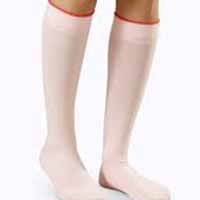
Unlike graduated compression stockings, non-medical hosiery provides uniform pressure. The pressure exerted is typically lower and can be used without the need to consult a medical doctor or get a prescription. Non-medical support women’s compression hosiery includes flight hosiery and elastic support hosiery, often used to relieve tired, heavy and aching legs.
You can buy non-medical compression socks at a local pharmacy, or order them through online sources.
Why Should Women Wear Compression Stockings?
Women are finding compression stockings to bring many health benefits to their bodies. Some of the women who are wearing compression stockings include:
Those Who Stand for Long Hours
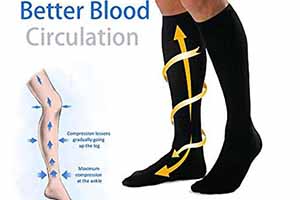
A 2014 national Gallup poll indicated that the average workday time for Americans stood at 9.4 hours per day. Many women have little or no time to relax and take a breath as they are on their feet all day long. As a result, lifestyles have changed and diseases increased. In many professions today, fatigue is common but the promotion of healthy circulation can help with this.
Wearing compression stockings helps to reduce fatigue and swelling in the feet and legs, as well as minimizing the risk of a person developing varicose veins from standing on their feet for long hours at a time. Hairdressers, nurses, retail workers and other women who find themselves on their feet for long hours may benefit from the use of compression socks.
Those Who Sit for Long Hours
Those people who work in industries where the spend a great deal of time sitting many also benefit from the use of compression socks. Pilots, truck drivers, and people who spend a lot of time sitting at a desk without getting up are likely to experience foot swelling as well as putting themselves at risk of blood clots from poor circulation.
Those Who are Athletes
People who train for athletic events or work out quite a lot may find that they are able to improve their sports performance with the use of compression stockings. Whether knee-high, thigh-high or full hose, compression gear for athletes is known to promote circulation, which may increase the amount of oxygen that gets to the muscles. This, in turn, makes many athletes testify to the fact that their performance is greatly increased.
In addition, the use of compression gear during a strenuous workout can reduce the amount of lactic acid produced in the muscles, which effectively minimizes the amount of soreness and cramping post-workout.
Health Factors Related to Compression Stockings
While compression stockings for women may be used for a variety of reasons, some doctors require them for certain patients. Compression therapy has been around for many years and women who suffer from certain conditions may need to use compression stockings of varying levels based on their particular needs. Here are some of the medical conditions that may require the use of compression stockings or socks for women.
- Edema – this is the swelling that results from accumulation of bodily fluids in tissues, especially the limbs such as feet and hands.
- Chronic venous insufficiency – this is a condition in which the veins are not able to pump deoxygenated blood back to the heart in an effective manner.
- Varicose veins -these are swollen, enlarged veins that may appear on the calves and thighs. They usually appear blue or dark purple and may look knotty and stick out from the legs.
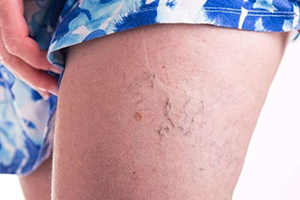
- Deep vein thrombosis (DVT) – this condition occurs when there is a blood clot in a vein deep inside the body. People who spend a lot of time immobile are at a particularly high risk of developing blood clots in the legs. Compression socks and support hosiery can help treat DVT.
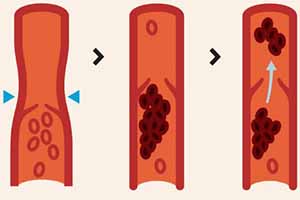
- Lymphedema – Lymphedema occurs when the body swells abnormally due to the accumulation of lymph fluid.
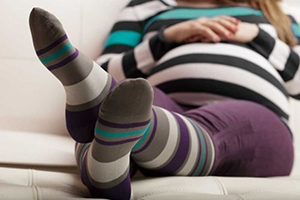
- Lipodermatosclerosis – this is the inflammation of subcutaneous fat and it may benefit from the use of compression stockings.
- Pregnancy or maternity – women who are pregnant and have been assigned to bed rest may be recommended by their doctors to wear compression stockings to help with circulation.
Popular on ComproGear
Rose Toy What is a Rose Toy?
Fitting Compression Stockings
Compression stockings and socks for women can only work effectively if they fit properly. They are not one size fit all, so you’ll need to do a bit of measuring in order to determine exactly what size you will need.
Why is Fitting Important?
If your compression socks are too tight, you will be uncomfortable and they might even cut off your circulation. Or, you might not even be able to get them on in the first place! And you aren’t going to get any benefits from compression stockings that just sit in your dresser drawer.
On the other hand, if your compression stockings are too loose, you’ll spend much time during the day pulling them up. Plus, they won’t provide the pressure needed in order to keep your blood flowing and your fluids moving.
If your compression socks don’t fit properly, you may experience some of these issues:
- Uncomfortable feeling
- Difficulty in walking, running or jumping
- Numbness and tingling sensations in the lower extremities
- Extreme tightness
- Itchiness in the feet, ankles, and calves
- breaking of skin
- Cutting off of blood circulation
Compression Stockings – How to Get Your Measurements
Measuring for compression stockings of different pressure levels is important in ensuring your comfort as well as for making sure your compression therapy is doing its job!
Here are some factors you need to consider when taking your measurements:
Morning Measurements. You should take your measurements for thigh high or knee high support compression stockings in the morning. This helps prevent the fitter from measuring based upon the affected area’s circumference after swelling has occurred. In many cases, swelling of legs occurs during the day when the person is active so getting the measurement first thing in the morning is critical.
Standing Measurements. In order to have accurate results, take your knee-high or thigh-high fitting measurements while standing. This allows you to measure the leg in its natural posture. In a situation where a person is bedridden, the leg and the feet should be elevated for 15 minutes before the measurement is taken.
Measuring Instructions for Compression Socks
Here is a brief overview of how to take your measurements for compression stockings. If you are concerned, be sure to check with your doctor or local pharmacist for more details.

- Begin with the smallest part of the leg. Take the circumference measurement of the ankle at the narrowest point, which is the area directly above the ankle bone.
- For closed-toed knee high or thigh high support stockings, measure the length of the feet from the tips of the toe to the end of the heel.
- Take the circumference measurement around the instep and the heel of the foot at maximum dorsiflexion.
- Measure the circumference of the calf at the widest point.
- Measure the circumference and length at the fibular head (two finger widths below the knee cap).
- Take the circumference of the middle of the knee cap with the leg slightly angled.
- For thigh-high compression stockings measure the circumference at the middle of the thigh.
- Take the circumference of the widest thigh point.
- Measure the length of the leg from the floor to the gluteal fold.
How to Wear
Because they are so tight, putting on compression stockings and socks can be a bit difficult. In fact, if you know that you have the right size, then they’ll probably a bit of a challenge to put on. But once you get the hang of it, you’ll be fine. Consider these tips for putting on compression stockings:
Donning the Knee-High Pair
- Place your hand in the stocking (palm to heel) and grab the heel between your thumb and fingers as if you are making a sock puppet.
- Put the foot in the stocking until the ankle is completely covered.
- Now grab the opening of the stocking and pull over the heel and continue pulling up to the knee. Make sure that you center the heel of the stocking properly.
- Smooth out wrinkles and you are ready to go!
Note that for knee-high stockings, the top band should be two fingers below the bend of the knee.
Donning Thigh Length Pressure Hosiery
To put on thigh-high compression stockings you may need gloves or powder to increase the friction and allow easy pulling. Check out this simple techniques;
- Grab the silicone band and turn it inside out.
- Hold the extremities and slide your leg inside the until it feels tight.
- Next, grab the stocking at the base and make a few creases and pull it towards the top.
- Place the toes in the right place.
- Raise it and distribute the compression evenly over the thigh.
- Finally, smooth out any wrinkles.
With just a few techniques, your compression stockings can now be a perfectly snug fit. It is advisable to put your compression stockings in the morning. Sprinkling talcum powder on your legs can reduce the friction between your leg and the stockings to make for a smoother process. Always remember to dry your legs before donning your stockings.
Proper Care
To ensure durability and best results, consider hand washing your compression stockings in lukewarm water with a gentle detergent. Machine washing can cause damage by stretching or wringing. Of course, you should always follow the manufacturer’s instructions for washing your socks.
Do not use bleaching agents and harsh detergents or fabric softeners. Since you’ll need to wash your compression socks after each wash, it’s best to have a few pairs to keep you in a fresh pair every day.
When you’re ready to order your compression stockings for women, online shopping is certainly easiest! Try out a company that will stand behind their product and gives you great results with satisfaction guaranteed. No promises that compression socks will change your life, but they could certainly keep you going with more energy and fewer health problems!
Looking to Buy a Pair of properly-sized Compression Socks?
Click the button below to see the lineup of ComproGear Compression Socks.
NOTE: The page includes a sizing chart and free returns, so you’re always sure to get the perfect size!
